 Politics
Politics  Politics
Politics  Weird Stuff
Weird Stuff 10 Eggs-traordinarily Odd Eggs
 History
History 10 Desperate Last Stands That Ended in Victory
 Animals
Animals Ten Times It Rained Animals (Yes, Animals)
 Mysteries
Mysteries 10 Devastating Missing Child Cases That Remain Unsolved
 Creepy
Creepy 10 Scary Tales from the Middle Ages That’ll Keep You up at Night
 Humans
Humans 10 One-of-a-kind People the World Said Goodbye to in July 2024
 Movies and TV
Movies and TV 10 Holiday Movies Released at Odd Times of the Year
 Politics
Politics 10 Countries Where Religion and Politics Are Inseparable
 Weird Stuff
Weird Stuff 10 Freaky Times When Famous Body Parts Were Stolen
 Politics
Politics The 10 Most Bizarre Presidential Elections in Human History
 Weird Stuff
Weird Stuff 10 Eggs-traordinarily Odd Eggs
 History
History 10 Desperate Last Stands That Ended in Victory
Who's Behind Listverse?

Jamie Frater
Head Editor
Jamie founded Listverse due to an insatiable desire to share fascinating, obscure, and bizarre facts. He has been a guest speaker on numerous national radio and television stations and is a five time published author.
More About Us Animals
Animals Ten Times It Rained Animals (Yes, Animals)
 Mysteries
Mysteries 10 Devastating Missing Child Cases That Remain Unsolved
 Creepy
Creepy 10 Scary Tales from the Middle Ages That’ll Keep You up at Night
 Humans
Humans 10 One-of-a-kind People the World Said Goodbye to in July 2024
 Movies and TV
Movies and TV 10 Holiday Movies Released at Odd Times of the Year
 Politics
Politics 10 Countries Where Religion and Politics Are Inseparable
 Weird Stuff
Weird Stuff 10 Freaky Times When Famous Body Parts Were Stolen
10 Perplexing New Types Of Astronomic Entities
The universe is a proverbial box of chocolates with no lemon creams. Every discovery furthers both science and imagination, but the most exciting are the outliers. And every initially nonsensical star, planet, or meteor reveals another line of the universal code.
10New Type Of Storm . . . On A Star

NASA’s Spitzer and Kepler Space Telescopes are a potent tag team and have recently observed an unexpected occurrence on a small star: a storm.
Only 53 light-years away in the constellation Lyra, a Jupiter-sized L-dwarf named W1906+40 sports a weird mole-like growth likened to the Jovian red spot. Unlike its similarly sized brown dwarf brethren, W1906+40 is a bona fide star, capable of squishing atoms together to produce its own light. Though just barely that—this tiny stellar object is a relatively chilly 2,000 degrees Celsius (3,500 °F).
W1906+40 is so lukewarm that clouds form and swirl in its atmosphere. These clouds are whipped up by the star’s inner fury and have created a dark spot near the north pole, which astronomers mistook as the equivalent of a sunspot. And while it isn’t directly visible, researchers inferred its presence by a dip in light that occurs every nine hours as it whips around.
Cloudy conditions are observed on brown dwarfs, but these substellar wannabes are not mighty enough to sustain fusion. Even their storms pale in comparison, the longest enduring no longer than a day. In contrast, the storm on W1906+40 is still going strong after two years.
9Mysterious New Type Of Globular Cluster

Globular clusters are like stellar popcorn balls—spherical aggregates of thousands of stars. Some are nearly as old as the universe and have traveled hither and thither for billions of years before settling on the outskirts of established galaxies.
Our Milky Way is decent but has only about 150 clusters to its name. More massive galaxies bling themselves out with many clusters, and the nearest galactic monster is Centaurus A (NGC 5128), an elliptical galaxy 12 million light-years away with 2,000 globular hangers-on.
But not all of Centaurus A’s clusters make sense. Normally, a cluster’s mass is commensurate with its brightness, and the most luminous sources are also the most massive. But in sampling 125 globules from Centaurus A, astronomers found that some smuggle much more mass than we can see, even with our full range of fancy imagers.
Researchers offer two equally impressive solutions: dark matter or black holes. Globular clusters don’t often contain dark matter, unlike galaxies, but maybe a few have acquired this most mysterious substance through some unknown mechanism. Black holes are also massive enough to produce the observed effect, painting a scary picture of Centaurus A as a cosmic mine field with a periphery of gluttonous black holes.
8New Ultra-Bright Supernova
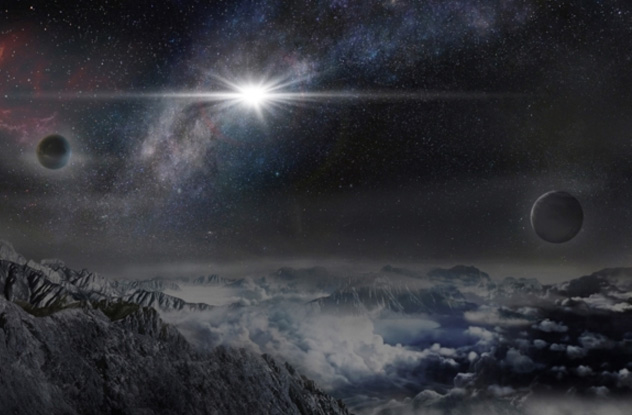
Ohio State University’s awesomely acronymed observatory, the All Sky Automated Survey for SuperNovae (ASAS-SN), recently spotted the most stupidly bright star death ever observed.
In 2015, its twin telescopic arrays Brutus and Cassius logged an unremarkable blotch of light. Later observations revealed an odd light spectrum emanating from said blotch, and eventually, the Southern African Large Telescope confirmed an ultra-bright gas cloud with an unidentified 15-kilometer (10 mi) object at its center. Researchers blame a past supernova, several times stronger than the previous record holder—so violent that it unleashed almost 600 billion Suns’ worth of fury against the universe; an output that would take our lowly star 10 billion years to match.
ASASSN-15lh, as it’s known, is so magnificent that it straddles the limit of our scientific understanding. Astronomers can’t comfortably explain the supernova’s strength but have several ideas. Maybe it’s the wild death throes of one of the universe’s most massive of stars. So few of these elites exist that it’s quite possible we simply haven’t seen one blow up before.
Alternatively, a millisecond magnetar could be to blame. Such objects spin at the astonishing rate of once per millisecond. If able to convert this immense rotational energy almost entirely to light, they could produce such catastrophic outbursts as observed by astronomers.
7New Type Of Star Disturbance Is Like Stellar Music
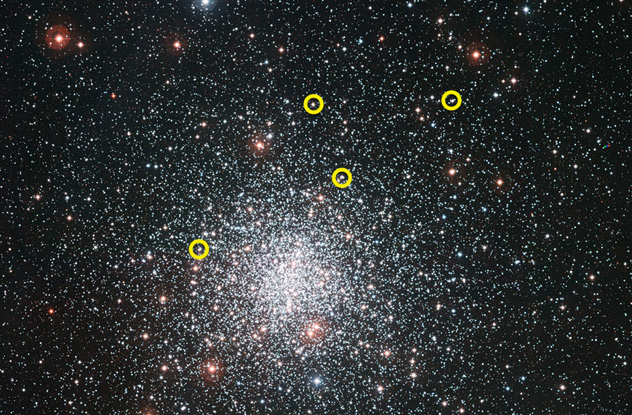
Astronomers are hunting down the oldest stars in the galaxy, and a newly innovated technique allowed them to pin down an ancient group of stars from the Milky Way’s earliest days.
A study from the University of Birmingham’s School of Physics and Astronomy probed into the hearts of eight elderly stars residing in the Messier 4 (M4) globular cluster, a mere 7,200 light-years away, to capture the “music” within. The stars are much older, fatter, and redder than the Sun and (most surprisingly) are bubbling with sound. These “resonant acoustic oscillations” perturb the stellar matrix and cause tiny but detectable changes in brightness.
The newfound ability to measure these oscillations has birthed the field of asteroseismology, or a precise way to run background checks on stars. And, like weight-guessers at the state fair, astronomers can now use this technique to ascertain a star’s age and mass. The oscillations confirm the theoretical calculations, dating M4’s stars at 13 billion years young and establishing them as galactic progenitors.
6New Type Of Star With Oxygen Atmosphere
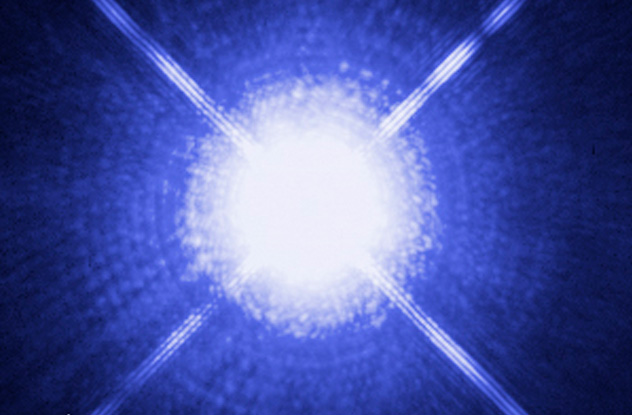
Star SDSSJ124043.01+671034.68 (“Dox” for short) is just like any other star, except it requires several huffs to pronounce—and, oh yeah, its outer layer is 99.9 percent oxygen. This seemingly impossible white dwarf star is unique in the compendium of 4.5 million stellar observations, including among its 32,000 confirmed white dwarf brethren.
Equally impressive is its discovery. When sniffing for remarkable stars, researchers examine spectral graphs, which give away a star’s elemental composition. Unfortunately, oddness is a human concept, so the task cannot be relegated to machines and requires a living eye. The human eye on this occasion belongs to undergraduate student Gustavo Ourique, who leafed through approximately 300,000 spectral charts at a rate of up to a few thousand per day, before spotting oxygen-swaddled Dox.
Normally, white dwarfs are coated in the lighter, floatier elements produced during the star’s life cycle. But Dox somehow relieved itself of its fluffy shroud and acquired a nearly pure oxygen environment, peppered with the smallest pinch of other elements, like neon and magnesium.
Researchers have no idea how but speculate that Dox once enjoyed the companionship of a red giant. It pilfered matter, in the form of super-hot gas, from its stellar spouse until Dox ate too much, blew its top, and supposedly banished the entire stockpile of lighter material to deep space.
5New Type Of Space Mountain
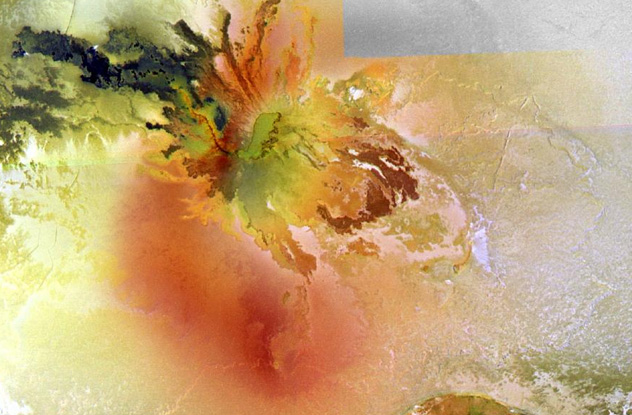
Jupiter’s constantly erupting moon Io is the most volcanic thing in the solar system. It orbits only 400,000 kilometers (260,000 mi) from its bosomy, gassy parent, and the massive gravitational forces chew up the small moon like a gumball.
Thanks to countless cycles of gravitational assault, Io is now dotted with sulfurous geysers, infernal lava flows, and hellishly jagged mountains. These hundred or so mountains are unlike any others observed throughout the solar system: They exist in isolation and jut straight up from Io’s flexible terrain, unlike the grouped and gradually sloping mountains of other worlds.
According to simulations, compressive forces work together with deluges of lava to produce the odd, vertical mountains. Io’s surface is constantly coated in fresh lava from its 400 active volcanoes (impressive for a body the size of the Moon) which cover the plains with five new inches of molten matter every decade.
The accumulating ash and lava create extreme pressures, which increase with depth thanks to the spherical nature of (most) moons. When the strain becomes unbearable, the terrain splits and a massive escarpment is ejected.
4 New Type Of Unexpectedly Young Hot Jupiter
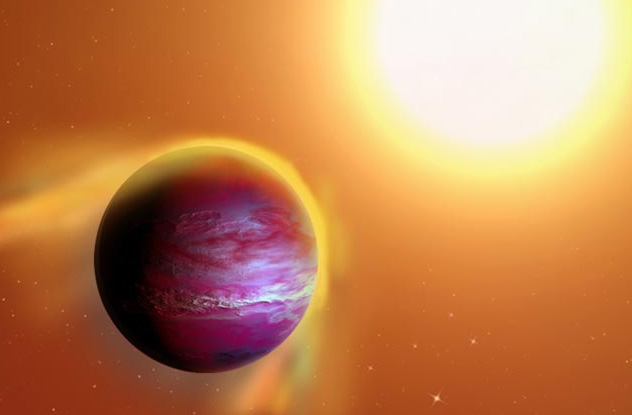
Hot Jupiters are gas giants that somehow found themselves within baking distance of their stars. Some are locked in such tight orbits that the star’s encroaching gravity peels away the smaller body layer by layer, and potential planet PTFO8–8695 b spirals so close that it completes an orbit every 11 hours.
PTFO8–8695 b also holds distinction as one of the youngest planets ever observed because its star, PTFO8–8695, is only two million years old. That’s paradoxically youthful—most hot Jupiters orbit stars that are billions of years old, or middle-aged in stellar terms.
Astronomers think that all hot Jupiters are migrants since it’s far too hot for gas giants to form anywhere near their star. Instead, gassy planets coalesce further out where conditions are calm and cool; accordingly, our giants located in the solar wilds past the asteroid belt.
The fate of PTFO8–8695 b is uncertain, though there is some optimism that it might not be irrevocable doom. Some hot Jupiters seem to have settled into stable though scorching orbits, and it’s possible that a shedding planet may hold on to enough of its mass to stave off a violent deconstruction.
3New Type Of Possibly Extinct Space Rock
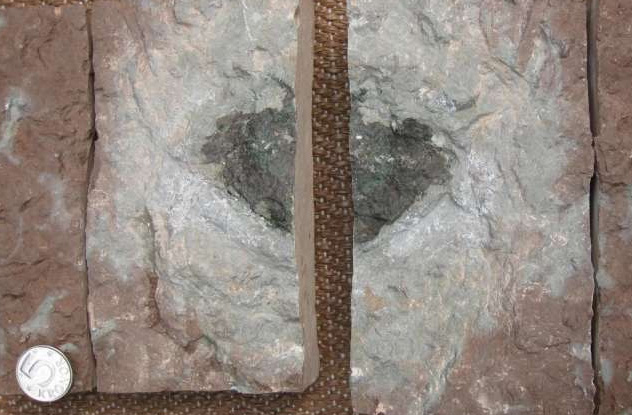
Oest 65, an ancient alien space-rock rich in iridium and neon, is unlike anything else in our collection of 50,000 cosmic souvenirs. In fact, it may be of a type we’ll never see again, since astronomers believe that brutal collisions reduced its parent body to dust.
The meteorite fell about 470 million years ago and settled at the bottom of an antediluvian ocean, now the site of a Swedish quarry. Its parent was most likely a sizable space potato 20–30 kilometers (12–19 mi) wide, large enough to take a good chunk out of Earth, compared to the relatively measly dinosaur-wiping 10-kilometer-wide (6 mi) Chicxulub asteroid.
The orbiting potato of death impacted an even greater space-mountain 100–150 kilometers (60–90 mi) wide, birthing many smaller chunks that rained down on Earth with fiery impunity. These chondrites still litter the solar neighborhood, though we’ll probably never find another specimen like Oest 65, which offers a rare glimpse into the composition of the early solar system.
2New Type Of Extrasolar System

When astronomers discovered planet 2MASS J2126-8140. it looked like one of the loneliest worlds in existence. A rogue gas giant 12–14 times more massive than Jupiter, the planet is doomed to trawl the cosmic boonies forever in search of a sun to call its own.
But the story has a happy ending. Astronomers noticed another object tailing the outcast planet, a red dwarf named TYC 9486-927-1. Both bodies are about 100 light-years away from Earth and seem to be moving together—2MASS J2126-8140 isn’t an orphan after all!
Working out the distances, researchers realized they’d discovered the largest solar system to date. At 621,000,000,000 miles away, the parent star appears as distant as any of the small, flickering lights in our own night sky. How’s this—the planet resides so far from its star that any hypothetical life-forms gazing into the abyss would have a hard time picking out their star from the other nearly identical pinpoints of light in the night sky.
In solar system terms, 2MASS J2126-8140 swings an orbit 140 times wider than Pluto, which sits a mere 6 billion kilometers (3.7 billion mi) away from the Sun. Such a configuration could not have come about from the traditional solar system–birthing method of disk collapse, and researchers think the two bodies precipitated from a single, gargantuan wisp of intergalactic gas.
1New Type Of Rocky Planet

Rocky planets like Earth are governed by a mass limit. If one grows too fat, its gravitational corpulence attracts more and more hydrogen gas and it poofs into a presumably sterile gas giant. At 17 times the mass of Earth and devoid of any gas, planet Kepler-10c gives astronomers the proverbial middle finger.
They found the planet floating 560 million light-years away in the constellation Draco using the Kepler Space Observatory in combination with the Canary Islands’ ultra-suave Telescopio Nazionale Galileo. Kepler-10c is 30,000 kilometers (18,000 mi) in diameter and was initially classed as a fun-sized gas giant known as a mini-Neptune, belonging to a family of relatively small planets with dense cores layered with thick gasses.
But the mini-Neptune hypothesis dissolved as mass measurements revealed that Kepler-10c somehow managed to squash 17 Earth-masses into its frame. That’s much too beefy for a mini-Neptune and suggests a planet composed of rocky solids.
And at 11 billion years old, Kepler-10c is a cosmic OG. Though its advanced age suggests the early universe harbored a good deal of heavy elements, raising the possibility that the cosmos hosts many more rocky planets than previously believed.








